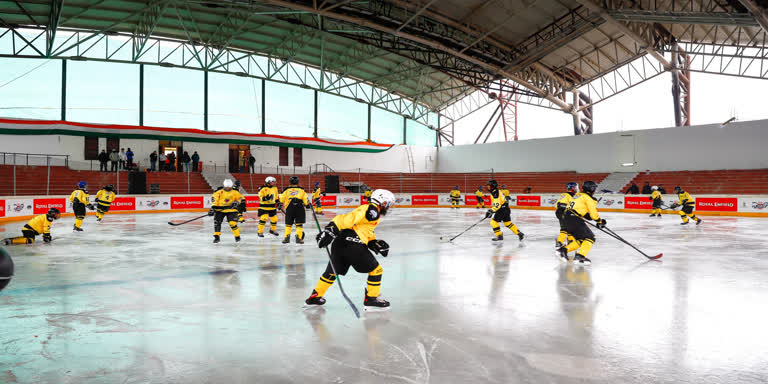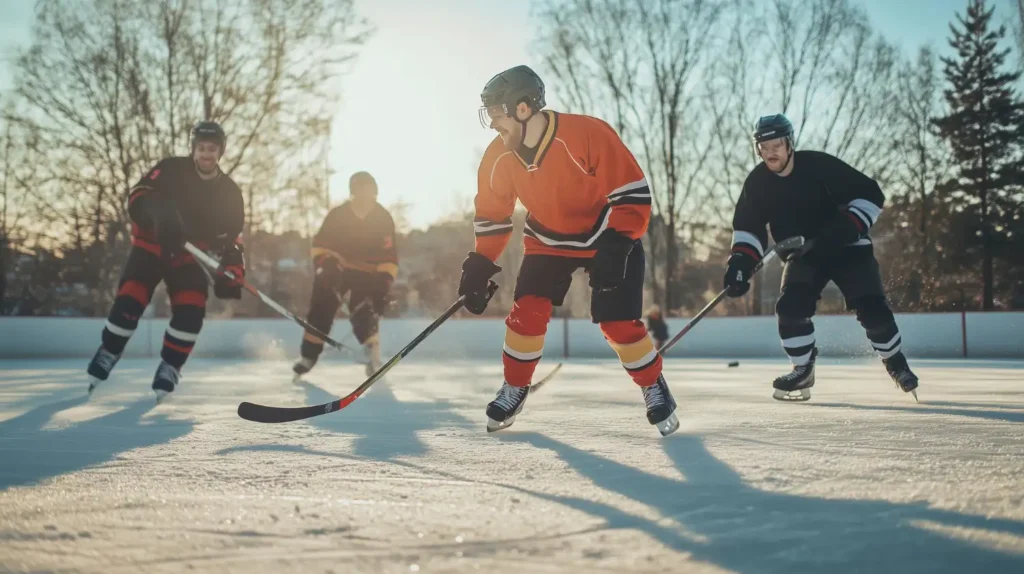Hockey is one of the most fast-paced and thrilling sports enjoyed by millions of fans across the United States. Whether you’re watching the NHL, college hockey, or just learning the rules, one of the most common questions new fans ask is: How many periods are there in a hockey game?
In this article, we’ll break down the structure of a hockey game, why it’s divided into periods, how overtime works, and what variations exist across different levels of play. By the end, you’ll have a clear understanding of how the sport is played and structured.
1. Standard Structure of a Hockey Game

How many periods in hockey?
A standard professional ice hockey game consists of three periods, each lasting 20 minutes of play time. These periods are separated by 15 to 18-minute intermissions, allowing players time to rest, strategize, and resurface the ice.
Here’s a quick breakdown:
- 1st Period: 20 minutes
- Intermission: ~17 minutes
- 2nd Period: 20 minutes
- Intermission: ~17 minutes
- 3rd Period: 20 minutes
If the score is tied at the end of regulation, the game may go into overtime, depending on the league rules (explained in the next section).
2. Historical Evolution of Hockey Periods
Originally, ice hockey games were divided into two halves, each lasting 30 minutes. However, this format caused ice conditions to deteriorate rapidly, impacting the quality of play.
To solve this, the three-period format was introduced in the early 20th century. Splitting the game into shorter periods improved the quality of the ice and gave players additional rest. This change greatly enhanced the game’s pace and viewer experience, making it the standard used today in professional leagues like the NHL.
3. Overtime and Shootout Rules
When a game is tied at the end of the third period, overtime rules vary based on whether it’s a regular-season game or a playoff matchup.
Regular Season (NHL):
- Overtime Duration: 5 minutes
- Format: 3-on-3 sudden death (first team to score wins)
- If no one scores: Shootout
Shootout:
- Each team takes three shots
- If still tied, it continues with sudden-death rounds
- The team with the most goals wins the game
Playoffs (NHL):
- No shootouts
- Overtime periods are 20 minutes, with full 5-on-5 play
- Sudden death continues until a goal is scored, no matter how many overtimes are needed
4. Variations Across Different Leagues and Levels
While the NHL sets the standard, other leagues and formats have slight variations:
College Hockey (NCAA):
- Same structure: 3 periods, 20 minutes each
- Overtime rules differ: 5-minute OT, then shootout depending on the conference
International Hockey (IIHF):
- 3 periods of 20 minutes
- Intermissions may vary slightly
- Overtime and shootout rules differ in international tournaments
Youth and Amateur Leagues:
- Periods may be shorter, such as 3 x 12-minute or 3 x 15-minute periods
- Some leagues may skip overtime altogether and declare a tie
Understanding these small differences can help fans follow various competitions more confidently.
5. Common Misconceptions About Hockey Periods

Is hockey played in quarters?
No. Unlike sports such as basketball or football, hockey games are not divided into quarters. They are split into three periods, a format unique among major team sports.
How many periods in a hockey match?
This is a commonly searched phrase, especially by fans new to the game. A hockey match and a game are the same thing — and they both contain three periods of regulation play.
Why not play two halves instead?
While this was common in early hockey history, the shift to three periods helped improve gameplay and maintain better ice quality, which is critical to performance and safety.
Conclusion
To sum it up: A standard ice hockey game consists of three 20-minute periods with intermissions in between. If the game is tied after regulation, overtime and potentially a shootout decide the winner. This format keeps the game exciting, balanced, and fast-paced — everything fans love about hockey.
Whether you’re a beginner learning the ropes or a fan brushing up on the rules, knowing how many periods are in hockey gives you a solid foundation for enjoying the game even more.
If you’re interested in learning more about different sports formats, tips, and guides, check out our homepage at Easy Sports Guide.

